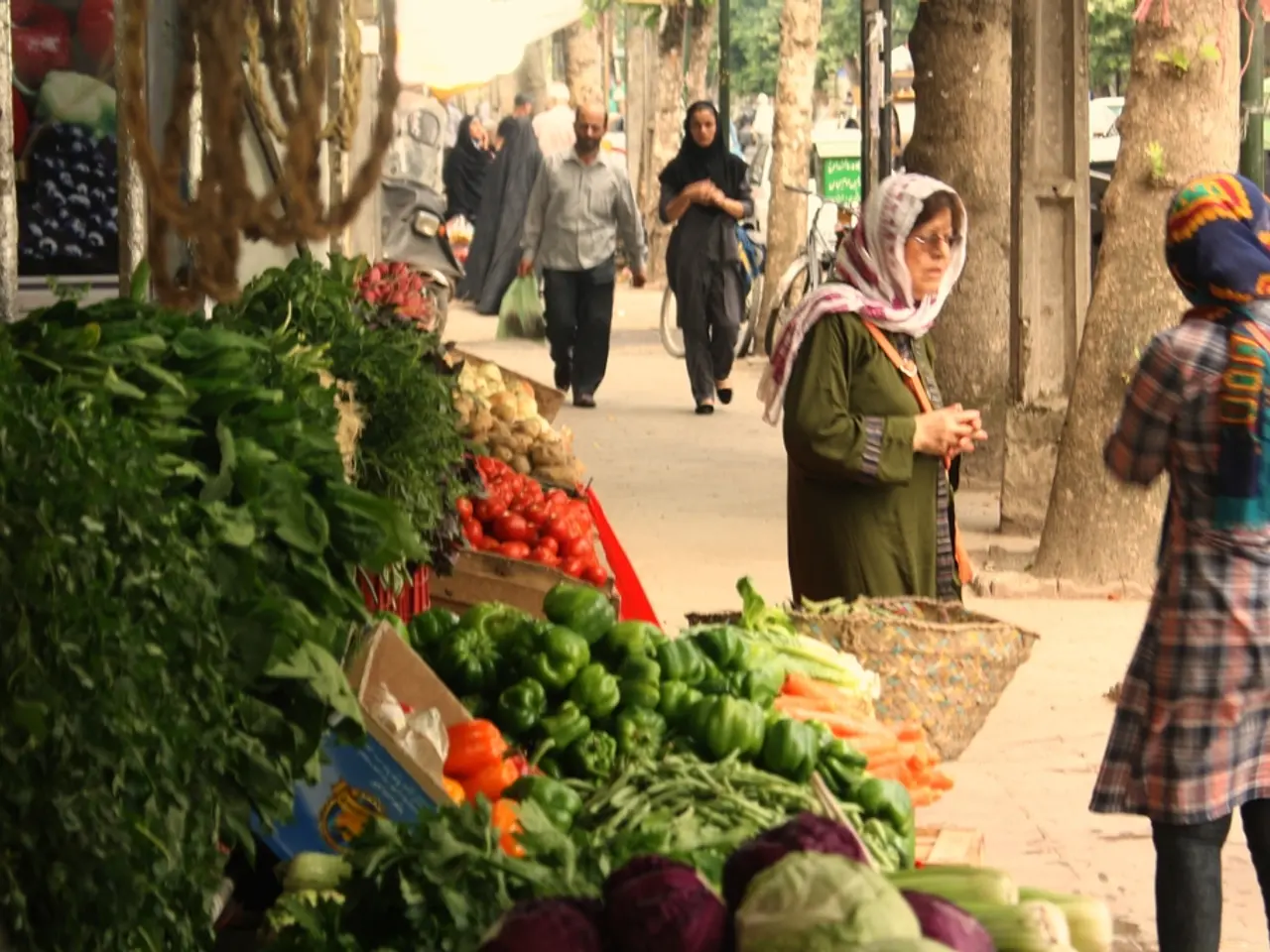Developing Local Micro-Markets via Permaculture Agriculture Strategies
================================================================================
Micro-market permaculture systems are gaining traction as a hopeful solution for our food system's challenges. These localised agriculture initiatives focus on growing diverse crops for local markets, emphasising sustainability and community-building.
To design a successful micro-market permaculture system, it is essential to consider climate, topography, and local ecosystems. This involves using diverse plant selection, water management, and soil health practices. Key books for learning about urban farming and sustainable living include "Gaia's Garden" by Toby Hemenway and "The Permaculture City" by the same author.
Supporting local farmers and producers is another way to get involved. Strategies for expansion include adding more production sites, trying different crops, and increasing how you share your products to reach more customers. Participating in local events like farmers' markets and food festivals is important for meeting customers, showcasing products, and getting feedback.
Social media platforms are a powerful tool for micro-market farmers to share their farming stories and products. Effective marketing involves developing a strong brand identity and engaging with customers on these platforms. Emerging trends and technologies in micro-market permaculture include mobile apps, online stores, and vertical gardening.
Micro-market permaculture systems provide fresh, nutritious produce to local communities, reducing dependence on global food chains. They offer many benefits including economic advantages, environmental sustainability, and improved food security. Scaling up these systems involves replicating successful models and expanding existing projects.
Local farming is getting more support from governments with changes in laws and funding for green farming. Technology is increasingly important in micro-market permaculture systems, with apps for local sourcing and data tracking tools helping farmers optimise production. The future of micro-market permaculture looks bright with new trends and technologies, policy changes, and global interest in localised agriculture.
Community engagement is vital for micro-market permaculture systems. This involves organising workshops, partnering with schools, and building a support network. Joining local garden projects or food co-ops is a great way to learn about permaculture and help your community become more resilient.
Many places offer online courses and workshops on permaculture. Individuals can create their own systems, join community gardens, or support local farmers to get involved in micro-market permaculture. There are groups focused on helping the permaculture movement grow, offering networking, advocacy, and practical help for those starting urban farming and regenerative agriculture projects.
Exploring urban farming and regenerative agriculture can be exciting with books, online courses, and organisations that support permaculture. Successful examples of micro-market permaculture systems in the United States include initiatives like FarmBox Foods' container farms in Colorado, Sanctuary Farms in Detroit, Lola’s Organic Farm in Georgia, and Draco Hill Nature Farm in Iowa.
These projects demonstrate impacts on local communities by enhancing food security, promoting food justice, and increasing resilience to climate challenges. FarmBox Foods deploys controlled-climate container farms in food deserts, schools, hospitals, and urban spaces, reducing transportation delays and spoilage, providing year-round access to fresh, locally grown produce.
Sanctuary Farms integrates permaculture principles into an urban nature sanctuary and food justice project, offering community education, free CSA boxes, and aiming for food sovereignty—giving residents control over what is grown. Lola’s Organic Farm applies agroecology and permaculture in a micro-market setting that addresses resilience to changing climate conditions and extreme weather.
Draco Hill Nature Farm exemplifies perennial permaculture adapted to climate variability, growing diverse perennial crops that require low inputs and support pollinators, aiming for sustainability and resilience amidst extreme local weather.
Overall, these micro-market permaculture systems impact their local communities by increasing food security and reducing reliance on imported food, promoting food sovereignty and community engagement in food production, enhancing climate resilience in agricultural practices adapted to microclimates, providing education and outreach, fostering local skills and environmental stewardship, and supporting economic sustainability for small farms via niche markets and diversified crops.
Such projects illustrate that permaculture micro-markets can function successfully at small scales in varied U.S. environments—from urban neighbourhoods and rural farms to container farms in food deserts—while addressing ecological, social, and economic dimensions of sustainable food systems.
- For successful micro-market permaculture systems, it is crucial to apply design principles that consider climate, topography, and local ecosystems, incorporating practices like diverse plant selection, water management, and soil health.
- In addition to local agricultural initiatives, supporting water management and soil health practices can take the form of composting and companion planting, which contribute to soil health and biodiversity.
- Emphasizing health-and-wellness and fitness-and-exercise, growing diverse crops for local markets also enhances nutritional availability and improves overall community wellness.
- Regenerative agriculture principles not only focus on environmental sustainability but also contribute to mental health and stress reduction by connecting people with nature and fostering a sense of community.
- Integrating permaculture principles into urban landscapes can offer numerous benefits, such as improved environmental conditions, supporting local food systems, and promoting regenerative practices like rainwater harvesting and green roofs.
- Collaborating with local organizations, schools, and health-focused institutions can help spread the knowledge of permaculture, sustainability, and its impact on mental, emotional, and physical well-being.
- Implementing climate-change solutions like micro-market permaculture systems can lead to more sustainable food systems, reducing greenhouse gas emissions and fostering biodiversity.
- Leveraging science, environmental-science, and technology tools can help farmers improve their techniques, track data, and make informed decisions regarding crop selection and water management.
- Addressing these complex issues requires a multi-faceted approach that aligns with the principles of sustainable agriculture, supporting local initiatives, and promoting education, collaboration, and community outreach.




